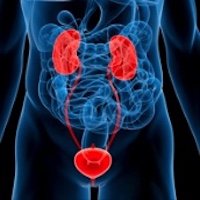The importance of PSA-Density in active surveillance for prostate cancer

Accepted: January 3, 2020
All claims expressed in this article are solely those of the authors and do not necessarily represent those of their affiliated organizations, or those of the publisher, the editors and the reviewers. Any product that may be evaluated in this article or claim that may be made by its manufacturer is not guaranteed or endorsed by the publisher.
Objective: In this study, we aimed to determine the predictive factor for additional treatment requirement in active surveillance (AS) for patients with low or very low-risk prostate cancer (PCa) and we investigated the effect of tumor burden by total core involvement rate in biopsy to predict of need for additional treatment.
Material and methods: 107 patients with PCa in AS between 2005 and 2018 have been evaluated retrospectively. Groups were divided into two groups according to the need for additional treatment. Group 1 received additional treatment, group 2 did not receive additional treatments and active surveillance was continued. Patient’s total prostate-specific antigen (tPSA), prostate-specific antigen density (PSA-D), total core involvement count, quantity and rate at biopsy pathology results and follow-up period were recorded and compared in the two groups.
Results: The current cohort includes 107 patients. Mean age at diagnosis was 63.01years. Mean tPSA values at diagnosis were 6.09 ng/mL and 5.2 ng/mL in the group 1 and group 2, respectively. Mean follow-up period was 38.1 months (range, 12 to 134 months). Only PSA-D measurement significantly predicted need for additional treatment (p = 0.017). ROC analysis showed that the optimal threshold was 0.13 ng/mL/cc (sensitivity: 70.8%; specificity: 57.1%). Additional treatment requirement was not detected in patients with PSA-D cut-off level less than 0.07 ng/mL/cc.
Conclusions: Total tumor burden of less than 5% is safe for patients with low or very low-risk PCa in AS. A 0.13 ng/mL/cc cut-off level of PSA-D can predict to need for additional treatment in patients managed by AS.
PAGEPress has chosen to apply the Creative Commons Attribution NonCommercial 4.0 International License (CC BY-NC 4.0) to all manuscripts to be published.


 https://doi.org/10.4081/aiua.2020.2.136
https://doi.org/10.4081/aiua.2020.2.136



